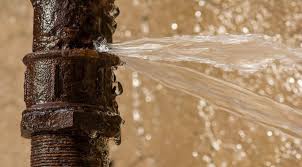Discovering a water leak outside your home can be a frustrating and costly problem if left unaddressed. Whether it’s a dripping faucet, a broken irrigation line, or a hidden pipe leak, early detection and repair are essential to prevent water waste and potential damage to your property. In this article, we’ll explore the common causes of outdoor water leaks, how to identify them, and the steps you can take to fix the issue.Common Causes of Outdoor Water Leaks
- Faulty Irrigation Systems: Leaks in sprinkler heads or damaged underground pipes can lead to significant water loss.
- Broken Outdoor Faucets: Over time, outdoor spigots can wear out or develop cracks, causing leaks.
- Damaged Water Supply Lines: Shifting soil or tree roots can crack pipes, leading to hidden leaks.
- Pool or Fountain Leaks: If you have a pool or water feature, cracks or loose fittings can cause water to escape.
- Clogged or Misaligned Gutters: Poor drainage can cause water to pool and leak into unwanted areas.
How to Identify a Water Leak Outside Your HomeDetecting an outdoor water leak early can save you money and prevent further damage. Here are some signs to look for:
- Unexplained Increase in Water Bills: A sudden spike in your water bill may indicate a hidden leak.
- Wet Spots or Puddles: Persistent damp areas in your yard, especially when it hasn’t rained, are a red flag.
- Low Water Pressure: A drop in water pressure could signal a leak in your supply line.
- Unusual Sounds: Hissing or dripping noises near pipes or faucets may indicate a leak.
- Lush Patches of Grass: If one area of your lawn is greener than the rest, it might be due to an underground leak.
Steps to Fix a Water Leak Outside Your HomeOnce you’ve identified a leak, follow these steps to address the issue:
- Turn Off the Water Supply: Locate the main shut-off valve and turn it off to stop the flow of water.
- Inspect the Leak Source: Determine whether the leak is coming from a faucet, pipe, or irrigation system.
- Repair or Replace Damaged Parts: Depending on the issue, you may need to tighten fittings, replace washers, or install new pipes.
- Test the Repair: Turn the water back on and check for any remaining leaks.
- Monitor for Recurrence: Keep an eye on the repaired area to ensure the leak doesn’t return.

When to Call a ProfessionalWhile some leaks can be fixed with DIY methods, others require professional assistance. Consider calling a plumber if:
- The leak is in a hard-to-reach area, such as underground or behind a wall.
- You’re unable to locate the source of the leak.
- The repair involves complex plumbing work or specialized tools.
- You suspect a major pipe rupture that could cause significant damage.
Preventing Future Outdoor Water LeaksTo minimize the risk of future leaks, take these preventive measures:
- Regular Inspections: Check outdoor faucets, irrigation systems, and pipes for signs of wear or damage.
- Winterize Your Pipes: Drain and insulate outdoor pipes before freezing temperatures arrive.
- Upgrade Old Plumbing: Replace outdated or corroded pipes with durable materials like PVC or copper.
- Maintain Proper Drainage: Ensure gutters and downspouts direct water away from your home’s foundation.
- Monitor Water Usage: Keep an eye on your water meter for unusual fluctuations.
By staying vigilant and addressing leaks promptly, you can protect your home from water damage and conserve this precious resource. If you’re unsure about how to handle a leak, don’t hesitate to seek professional help to ensure the job is done right.
